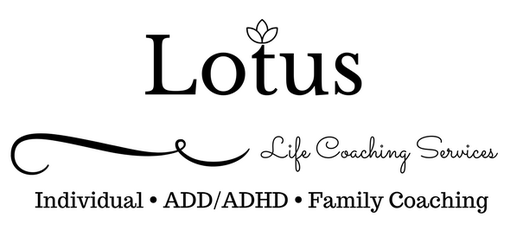|
This article was originally published on PsychCentral
ADHD is a complex neuro-developmental condition that often requires lifelong treatment and management. When your child receives an ADHD diagnosis, it’s a game-changer. Conventional parenting tactics, strategies, and wisdom often no longer apply. Instead, you’ll need to begin what I call parenting with an ADHD lens. What is parenting with an ADHD lens? Kids and teens with ADHD have unique characteristics and challenges. What may work for others may fall completely at or have unintended consequences when it comes to your ADHD kiddo. Parenting with an ADHD lens simply means that the way you view your child’s behavior and the decisions you make as a parent must always take ADHD into account. If your child or teen has been diagnosed with ADHD, here are some important points to consider… 1. ADHD is more than just an inability to focus or sit still When people think about ADHD, what usually comes to mind is someone who can’t pay attention or sit still. In reality, ADHD is so much more and to confuse the matter further, many of the challenges associated with ADHD are also situational. This explains why your child may be able to play video games or watch YouTube for hours on end but doing 30-minutes of homework is like pulling teeth. In addition to challenges related to focus and hyperactivity, your child may also struggle with things like planning, organization, time management, poor working memory, an inability to follow directions, emotional blowups, and have difficulty making friends. Keep in mind that ADHD looks different from person to person. What one child with ADHD struggles with, another may not. If your child has been diagnosed, take steps to educate yourself about the ins and outs of ADHD. Luckily there are lots of great books, articles, workshops, and groups available for parents and caregivers. 2. Your child’s executive age versus their chronological age Executive age refers to an individual’s neurological maturity and functioning in relation to their chronological age. Children and adults with ADHD tend to be 3-5 years behind their peers when it come to their executive age. What this means is that if your child is chronologically 10 years old, they may have an executive age closer to that of a 5, 6, or 7- year-old. You may notice that your child’s emotional, social, and/or problem-solving skills are more like those of a child who is younger. Children and teens with ADHD may also gravitate toward forming relationships with younger peers. Also keep in mind that a child’s development does not progress in a linear fashion. This means that your child might be beyond his years when it comes to academics but behind socially or vice versa. 3. You’ll need to adjust your expectations Being that your child’s executive age is likely behind that of their peers and the fact they must also contend with the various challenges brought on by ADHD, it becomes necessary to adjust your expectations based on where they are developmentally and what they are realistically capable of doing instead of what you think they SHOULD be able to do at their age. Going back to executive age, a teen who is chronologically 16 and therefore legally able to get a driver’s license may actually be functioning at the level of a much younger child between the ages of 11 and 13. With that in mind, he or she may nor be ready for the responsibility of having a license or the skills required to drive safely. So when it comes to things like driving, appropriate cell phone and/or social media usage, staying home alone, or anything else that requires a certain level of independence and self-management, make decisions based on what you feel is appropriate given their maturity and skill-level. At the same time, make sure to give your child or teen the opportunity to spread their wings and learn greater independence. 4. Put the focus on discipline rather than punishment ADHD-related challenges in children and teens can often look like laziness, apathy, or deance. Many parents have told me that they often struggle to tell the difference between ADHD-related symptoms and when their child is simply just acting out. They also report that many of the consequences and punishments they put in place have seemingly no effect. Dr. Dan Siegel has been quoted as saying, “We forget that discipline means to teach, not to punish”. Oftentimes, children and teens with ADHD want to do well, they just lack the skills needed to meet adult expectations. While you should never punish a child for behavior that is beyond their control, using natural consequences, setting clear expectations, and problem-solving with your child can help you address behaviors that are problematic. If a child breaks a toy out of frustration for example, don’t jump to immediately replace it. When your child is calm, let them know that you understand their feelings of frustration but that breaking toys isn’t an acceptable response and teach them how to appropriately express big emotions. 5. Understand and accept that your child may need to do things differently It’s important to recognize and accept the fact that your ADHD child will have ways of doing things that may be very different from the way you or others might do them, and that’s okay. He or she may need to move around in their chair or squish silly putty while they do their homework to help them focus. They may need to stand instead of sit at the dinner table; rely on a timer to help them brush their teeth in a timely fashion; or be guided through how to clean up their toys. Whatever you do, pick your battles and help your child discover what they need in order to be successful. Parenting a child or teen with ADHD can be challenging, frustrating, and downright confusing at times. The key is learning how to recognize and support your child’s unique needs to help put them on the road to success and keep the peace at home. Image: Pixabay/PublicDomainPictures
0 Comments
Your comment will be posted after it is approved.
Leave a Reply. |
Categories |
Copyright © 2017 Lotus Life Coaching Services Staunton, VA (949) 334-7204 [email protected]
Privacy Policy Terms & Conditions Website Disclaimer
Privacy Policy Terms & Conditions Website Disclaimer


 RSS Feed
RSS Feed